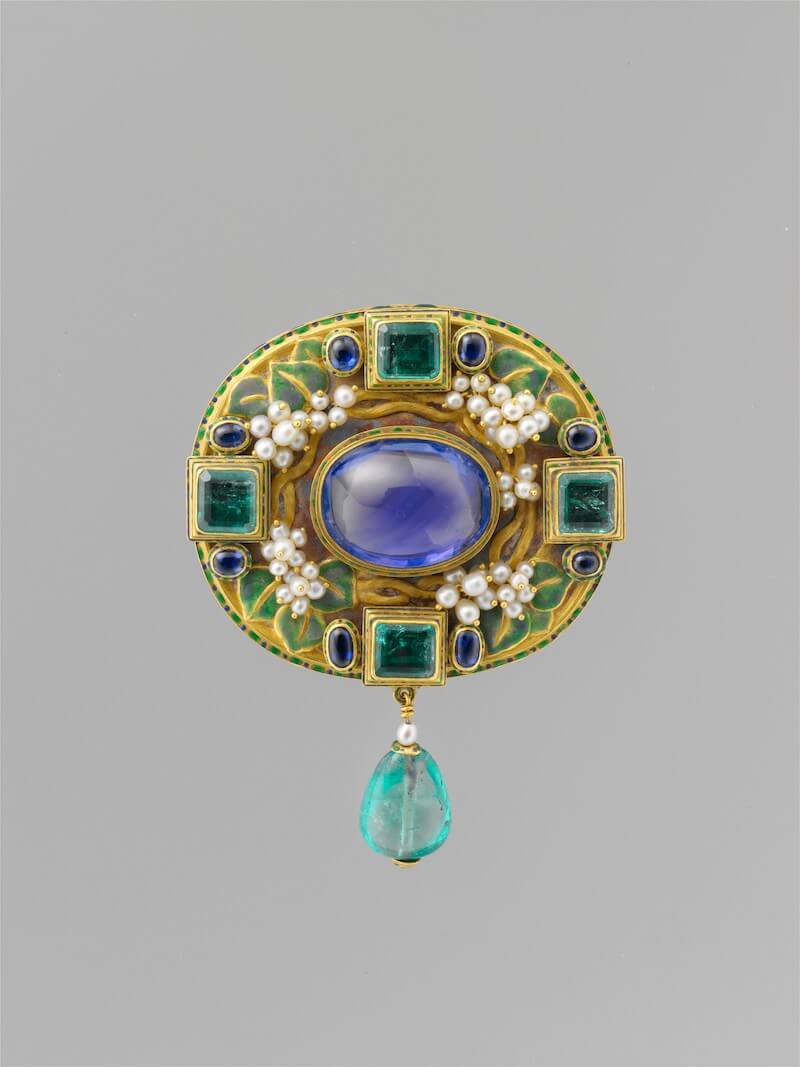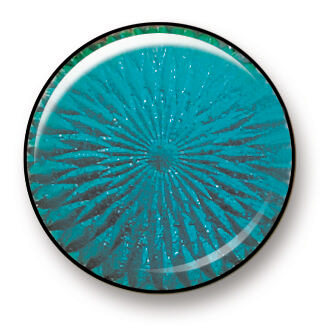Enameling
What is Enamel ?
Enamel refers to a mass of inorganic composition of silicates and oxides, which produces a glass-like coating by melting onto a substrate. The Enamel mass is applied to a metal substrate in one or more steps, melted at a high temperature and for a short firing time.
Household items such as pots, cups and bowls have an Enamel coating which is called industrial or technical Enamel. This type of enamelling began only in the 19th century. Jewellery Enamel, which is the type of enamel we are offering, has a much longer artistic and cultural history.
In contrast to industrial Enamel, Jewellery Enamel can only be applied to copper, silver and gold substrates to which it bonds during the firing process. It does not adhere to steel, aluminium or any other material.
How to select Enamels ?
5 characteristics
The Jewellery Enamels we sell come in 5 different characteristics
which help you to find your way through our large selection.
Step 1: Lead vs. Leadfree
→ Am I a hobby artist or a registered business?
Leadfree
If you are a beginner, a hobby artist or would like to enamel with schools, your best choice is to try our leadfree Enamels. The burning temperature of them is “hard” (770 – 820°C) so that all the different colours can be easily used together. As the name says, these colours do not contain lead, a substance that can be dangerous if used without the necessary precautions.
With lead content
We offer registered businesses a wide choice of colours and hues of lead containing enamels. These have the advantage of being more radiant than lead-free enamels. However, working with lead requires you to be careful when handling it and we highly recommend to wear a dustmask for your safety. (See safety guidelines)

Step 2: Colour
→ What story would I like to tell?
Colour is the most defining characteristic of your creation. Each colour has its own statement and evokes different emotions in everyone. Which story do you want to tell with your workpiece?
To answer this question we would like to offer you a wide range of over 220 different colours, including transparent, and different tones of blue, red and yellow. This large selection allows you to find exactly the right tone for the story you want to tell.
Step 3: Hardness
→ Which is the right burning temperature for me?
SOFT: 700 – 730°C | MEDIUM: 730 – 770°C | HARD: 770 – 820°C
Once you have choosen your colours, you have to stick to one and the same hardness. The hardness determines the burning temperature of your workpiece. The right hardness therefore is the one that all your desired colours need to have in common.
Keep in mind these 3 different degrees of hardness. The differences are due to small variances in the ingredients of the Enamel.
If you choose colours with a different hardness, one of the Enamels that you are using may be melt before the other has even adhered to the metal. However, some techniques intentionally use different burning temperatures to create a certain effect. This could also be a more advanced option to try out.

Transparent

Opaque

Opal
Step 4: Transparency
→ Which effects would I like to have?
Enamels come in 3 different degrees of transparency:
Transparent
Beeing seethrough, these Enamels offer you a tool to play with colour and metal. You could work on the metal before you apply transparent Enamel on it or use foils that will shine through after the firing process. The colours provide a very shiny and brilliant aspect.
Opaque
These colours have the attribute to fully cover the metal ground you are enamelling on. They provide you with a lot of strength in their expression and help to set a clear statement in your workpiece.
Opal
These colours may provide your workpiece with a shimmering effect, as you may wish for to depict clouds or water. They share the attribute of transparent colours while displaying a thin veil of opacity. This effect comes out only after the second burning. The first burning will give you a milky effect.
All the different transparencies can be used together in the same workpiece.
Step 5: Texture
→ Which texture would I like to work with?
Pulverized
This Enamel is finely ground and quick to use if you wish to start working directly after the washing process. This ensures to get rid of all dust particals that might still be in the Enamel.
Millefiori, Thread Enamel and Enamel Paints
- Millefiori are preworked Enamels that look like small flowers and can be added anywhere on your workpiece to dispense a stunning finnishing.
- Thread Enamel are like thin preworked Enamel filaments that come in different colours. You can use them to set clear lines into your piece of art.
- Enamel paints are handy to work with and are available in 12 different colours. You can apply these colours with a brush and paint even the minutest of details.
Pulverised dusted
All pulverised transparent colours can be purchased as dusted Enamel. This allows for a higher brilliance and saves the process of washing.
After the burning process, both pulverised and pulverised dusted Enamels will display an even coating on the metal surface.
Enamel Lumps
Lumps need to be ground before use. Transparent colours that have been freshly ground have the advantage of showing a much higher degree of brilliance. Especially when you work on gold and silver this becomes very clear. In addition, lumps can be ground into different degrees of coarseness. Lump Enamels can provide you with the effect of uneven spots and dots adding more vividity to your workpiece.
What is Jewellery Enamel made of ?
Ingredients vary from colour to colour, nevertheless the essential following ingredients can be listed:

